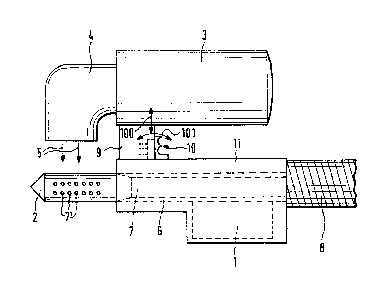Some of the information on this Web page has been provided by external sources. The Government of Canada is not responsible for the accuracy, reliability or currency of the information supplied by external sources. Users wishing to rely upon this information should consult directly with the source of the information. Content provided by external sources is not subject to official languages, privacy and accessibility requirements.
Any discrepancies in the text and image of the Claims and Abstract are due to differing posting times. Text of the Claims and Abstract are posted:
| (12) Patent: | (11) CA 1299616 |
|---|---|
| (21) Application Number: | 1299616 |
| (54) English Title: | SWITCH FOR A HAIR TREATMENT DEVICE |
| (54) French Title: | COMMUTATEUR POUR APPAREIL DE TRAITEMENT CAPILLAIRE |
| Status: | Expired and beyond the Period of Reversal |
| (51) International Patent Classification (IPC): |
|
|---|---|
| (72) Inventors : |
|
| (73) Owners : |
|
| (71) Applicants : | |
| (74) Agent: | SWABEY OGILVY RENAULT |
| (74) Associate agent: | |
| (45) Issued: | 1992-04-28 |
| (22) Filed Date: | 1988-10-11 |
| Availability of licence: | N/A |
| Dedicated to the Public: | N/A |
| (25) Language of filing: | English |
| Patent Cooperation Treaty (PCT): | No |
|---|
| (30) Application Priority Data: | ||||||
|---|---|---|---|---|---|---|
|
ABSTRACT OF THE INVENTION
What is described is a switch for a hair treatment device,
consisting of a winding mandrel (2) driven rotationally by a
motor (1) and of a hair dryer (3) whose outflow nozzle (4) is
directed perpendicularly upon the axis of the winding mandrel (2)
and tangentially to its circumference. A switch (10) is provided
to switch the hair dryer of the drive motor (1) of the winding
mandrel on and off, whereby the switch (10) can be shifted from
an upper position to a lower position towards the handle on a
housing element (11) made in form of a handle for an operator.
The switch (10) can furthermore be tilted out of the shifting
plane and is provided with two switching cams (12, 13), whereby
one switching cam (12) actuates a first contact (14) through
which the motor (1) of the winding mandrel (2) is switched on
independently of the tilting position of the switch (10) when
said switch is shifted into the lower position, closer to the
handle (10). The second switching cam (13) is of such
configuration as to cause the hair dryer (3) to be switched off
by activating a second contact (15) when tilting takes place.
(Fig. 2)
Note: Claims are shown in the official language in which they were submitted.
Note: Descriptions are shown in the official language in which they were submitted.

2024-08-01:As part of the Next Generation Patents (NGP) transition, the Canadian Patents Database (CPD) now contains a more detailed Event History, which replicates the Event Log of our new back-office solution.
Please note that "Inactive:" events refers to events no longer in use in our new back-office solution.
For a clearer understanding of the status of the application/patent presented on this page, the site Disclaimer , as well as the definitions for Patent , Event History , Maintenance Fee and Payment History should be consulted.
| Description | Date |
|---|---|
| Inactive: IPC from MCD | 2006-03-11 |
| Inactive: IPC from MCD | 2006-03-11 |
| Inactive: IPC from MCD | 2006-03-11 |
| Inactive: Adhoc Request Documented | 1995-04-28 |
| Time Limit for Reversal Expired | 1994-10-28 |
| Letter Sent | 1994-04-28 |
| Grant by Issuance | 1992-04-28 |
There is no abandonment history.
Note: Records showing the ownership history in alphabetical order.
| Current Owners on Record |
|---|
| ABC-ELEKTROGERATE VOLZ, GMBH & CO. |
| Past Owners on Record |
|---|
| HUBERT THEIMER |